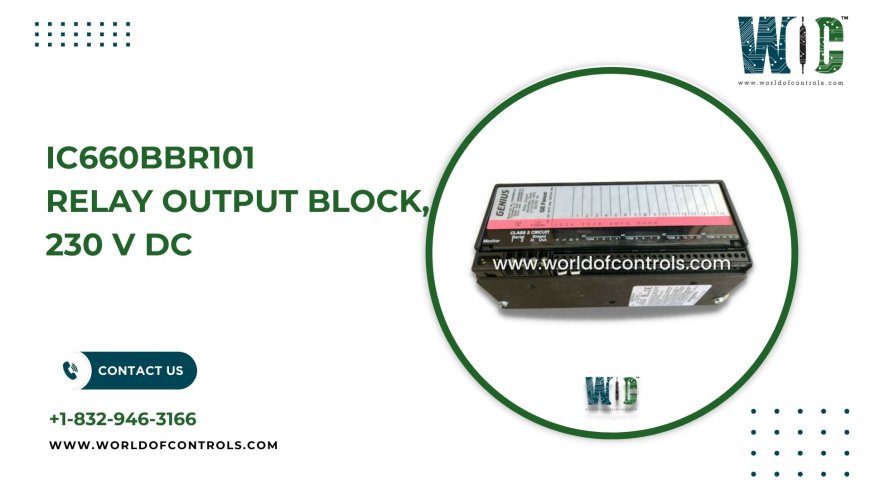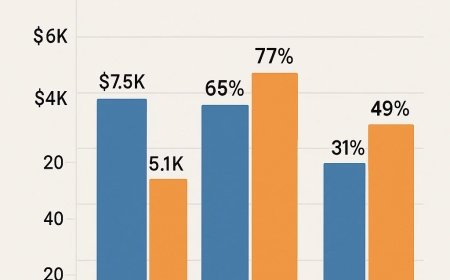Is GE’s 230V Relay Output Block Right for Your Application?
Reliable high-voltage switching for turbines: Is GE’s 230V relay output block the right choice for your control system?

In the high-stakes world of turbine control systems, component reliability and performance are crucial. Among the many devices used to ensure safe and precise operation, relay output blocks play a key roleespecially when dealing with high-voltage DC circuits. GEs 230V relay output block is one such component, commonly deployed in turbine environments where precision, durability, and control integration are non-negotiable.
But how do you know if this device is right for your application? Lets explore.
What Is a Relay Output Block?
A relay output block is an interface module designed to switch power to devices like valves, pumps, motors, and alarms based on low-voltage control signals from a programmable logic controller (PLC) or distributed control system (DCS). By using relays, these blocks can safely and reliably control high-voltage loads while keeping sensitive control circuits isolated.
In turbine systems, this kind of electrical isolation is essential, helping to prevent fault propagation and equipment damage.
GEs 230V Relay Output Block: An Overview
GEs 230V DC relay output block is a high-voltage discrete output module engineered for industrial automation environments, including turbine generator control, fuel management, lube oil systems, and safety shutdown operations.
Key Features:
-
High-Voltage Capability: Rated for 230V DC applications, ideal for turbine switching needs
-
Multiple Outputs: Typically provides eight isolated relay outputs in a compact design
-
Built-in Indicators: LED status lights for quick diagnostics and operational monitoring
-
Industrial Durability: Engineered to operate in harsh environments with high vibration, temperature extremes, and electrical noise
-
Flexible Integration: Compatible with GEs distributed I/O platforms, often used in power generation systems
Role in the Turbine Industry
Turbine operationswhether in gas, steam, or hydro power generationdepend on real-time monitoring and control of critical equipment. Relay output blocks are used extensively to manage:
-
Solenoid valves for fuel or steam regulation
-
Emergency shutdown systems
-
Lube oil circulation pumps
-
Cooling system fans and dampers
-
Alarm signaling and indicator circuits
GEs 230V relay block is particularly valued for its ability to switch high-voltage loads directly, reducing the need for intermediary relays or additional wiring. This simplifies system design and increases reliability.
Advantages in Turbine Applications
1. Reliable High-Voltage Switching
In turbine plants, many field devices operate at higher voltages than traditional control systems. A 230V DC relay output block eliminates compatibility concerns and ensures robust operation.
2. Simplified Troubleshooting
The inclusion of individual LED indicators for each output channel allows technicians to instantly verify operation and detect faultscrucial in minimizing turbine downtime.
3. Modular Design
As part of a modular control system, GEs relay blocks can be located close to the equipment they control, reducing wiring lengths, improving signal integrity, and saving panel space.
4. Rugged Build Quality
These blocks are built to withstand the rigors of turbine environmentsheat, vibration, and contaminantsensuring long-term, uninterrupted performance.
Is It the Right Choice for Your System?
GEs 230V relay output block is ideally suited for legacy or new turbine installations where high-voltage switching is required. However, its suitability depends on your specific needs.
? Consider Using It If:
-
Your turbine application uses or requires 230V DC switching
-
You need a reliable interface for electromechanical devices
-
You're operating within GEs control system ecosystem
-
You prioritize fast diagnostics and system maintainability
? It May Not Be Ideal If:
-
Your system uses low-voltage outputs (e.g., 24V DC or AC)
-
Solid-state outputs or analog signals are required
-
Youre using a control platform incompatible with GEs I/O infrastructure
Conclusion
Choosing the right relay output module for a turbine system is more than a technical decisionits an operational commitment. GEs 230V relay output block offers a proven, reliable solution for high-voltage switching in critical turbine applications. Its industrial-grade design, diagnostic features, and system compatibility make it a strong candidate for any high-performance turbine control environment.
If your project demands reliability, simplicity, and high-voltage handling, this relay block may be exactly what your system needs.
View More Products
-
Why GEs I/O Blocks Are a Popular Choice in Industrial Automation
-
Top Uses of GEs Auxiliary Battery Module in Industrial Settings








&srotate=0)























